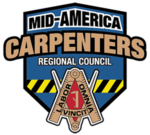Safety News & Alerts
Each quarter, the U.S. Chamber of Commerce survey contractors from across the country for insights in trends they believe are shaping the future of commercial construction. The 3rd Quarter report discusses the labor shortage and how the shortage of skilled labor is affecting job site safety concerns.
Evaluating and managing post-tensioned concrete structures for weakening and deterioration can be a difficult task. Conventionally reinforced concrete structures can be visually inspected for cracks and other obvious warning signs of deterioration. Post-tensioned concrete structure warning signs remain concealed and may delay corrective action or result in failure.
The Center for Construction Research and Training (CPWR) created a Quarterly Data Bulletin to provide updated data on various items related to construction workers. This new data can be used at commercial, industrial and residential workplaces as safety talks or awareness training.
Members and contractors can sign up for toolbox talks, hazard alerts and the newsletter.
If you are a signatory contractor and would like to schedule a FREE site safety audit contact the MACRC Safety Department to schedule a walk. All information is shared only with the contractor as we work together to eliminate the hazards and creating a safer and more profitable environment.
Safety Publications
How to Manage, Design, Develop, Deliver, and Evaluate Effective EHS Training
What makes Environmental, Health and Safety (EHS) training effective? Many companies spend a lot of time, effort and money trying to maintain and improve the safety, health and environmental quality at the workplace. How can the safety professional provide effective training and how does the professional manage, design, develop, deliver and evaluate their EHS training. ANSI Z490.1 provides a national standard for creating maintaining, and evaluating an EHS training program. This guide provides criteria listed in Z490.1. Company safety programs have benefitted from this standard. Download the ANSI Z490.1 Criteria for Accepted Practices in Safety, Health and Environmental Training guide here.
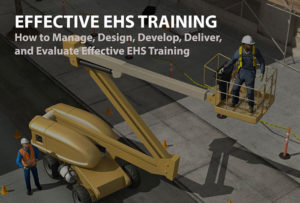
Serious Injury and Fatality Prevention: Perspectives and Practices
In the past twenty years, the United States has seen enormous gains in workplace safety. The total recordable incident rate (TRIR) has dropped from 8.5 recordable incidents per 200,000 in 1993, to 3.0 recordable incidents per 200,000 hours in 2016. Unfortunately, there is a more disturbing trend in workplace safety. The number of life-altering injuries and fatal incidents has been on a much slower decline and fatalities are actually on the rise over the past 3-year period. Download the entire Campbell Institute White Pages written by Joy Inouye here.
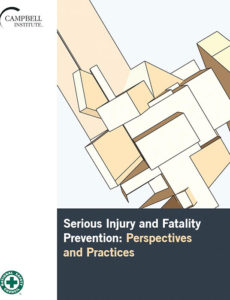
The NIOSH Pocket Guide to Chemical Hazards informs workers, employers and occupational health professionals about workplace chemicals and their hazards. The guide offers key chemical facts and helps users recognize and control workplace chemical hazards. Download or send for a copy of the guide here.
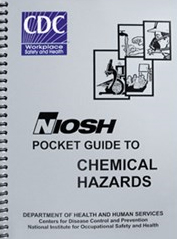
This publication provided by the Center for Construction Research and Training contains valuable data and information on the U.S. construction industry. Safety and health issues, economics, employment, income, education and training information is available to user’s of this book. The new edition offers on-demand access to charts, data, and includes interactive features that enhance the user’s experience. Download the Chart Book here.
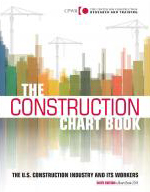
The National Institute of Occupational Safety and Health (NIOSH) recently published a workbook entitled: Fundamentals of Total Worker Health Approaches: Essential Elements for Advancing Worker Safety, Health, and Well-Being. The workbook focuses on promoting a productive workplace and providing a hazard-free work environment for all workers. It applies a modern prevention approach that recognizes job-related factors can have an important impact on the well-being of workers, their families and their communities. The workbook provides five defining elements of total worker health. To download a copy of this workbook, please click here.
The information in this publication is based on NIOSH supported research; Nail Gun Safety: A Guide for Construction Contractors (NIOSH Publication No. 2011–202/OSHA Publication No. 3459–8–11); and focus group discussions with residential building subcontractors, safety specialists and workers. New nail gun users must receive safety training, not just a copy of this publication.
Straight Talk About Nail Gun Safety
To Print the Document as a Booklet
This document can be printed in single page format or as a booklet. To maintain the page size at 8.5 x 11 inches in the booklet format, change the paper size to 11 x 17 inches. Proceed with printing the document as recommended below:
- Bring up your print screen.
- Go to the page handling feature. For example, your print screen may read “Page Sizing & Handling” or “Page Handling”.
- Select booklet.
- Adjust the printer settings so that each page aligns from the top to bottom and reads left to right. On some printers the setting is “Print on both sides: flip up”.
- Print.
Nail guns are widely used on many construction jobs, especially in residential construction. While they boost productivity they may also cause tens of thousands of painful injuries each year. This publication is intended to provide a resource for residential home builders and construction contractors, subcontractors, and supervisors to prevent these kinds of injuries.
The guidance was developed in response to a unanimous motion by industry, state, and labor stakeholders on OSHA’s Advisory Committee for Construction Safety and Health (ACCSH) on the need to develop awareness and materials about nail gun risks. OSHA and NIOSH worked together to make sure the guidance reflects the most current information available. The guidance highlights what is known about nail gun injuries, including the parts of the body most often injured and the types of severe injuries that have been reported. It describes the common causes of nail gun injuries and provides six practical steps that contractors can take to prevent these injuries. The guidance includes actual workplace cases along with a short section on other types of nail gun hazards and sources of additional information. Our hope is that by working together with tool gun manufacturers, safety and health professionals, and other organizations, we can improve nail gun safety on the job site. View a message from the Directors of NIOSH and OSHA supporting the nail gun safety guidance.
- NIOSH-OSHA-Nail-Guns-Cover-Letter.pdf
- Nail Gun Safety: A Guide for Construction Contractors
- en Español: Seguridad con las pistolas de clavos: Guía para los contratistas del sector de la construcción
Ordering Information
Contacting NIOSH – To receive documents or more information about occupational safety and health topics, please contact NIOSH: 1-800-CDC-INFO (1-800-232-4636); TTY: 1-888-232-6348; e-mail: cdcinfo@cdc.gov. DHHS (NIOSH) Publication Number 2011-202 or DHHS (NIOSH) Publication Number 2011-202 (Sp2012) for the Spanish language version.
Contacting OSHA – To order additional copies of this publication, to get a list of other OSHA publications, to ask questions or to get more information, or to file a confidential complaint, contact OSHA at 1-800-321-OSHA (6742) or TTY: 1-877-889-5627 or go to www.osha.gov. OSHA Publication Number 3459-8-11 or OSHA Publication Number 3505–07 2012 for the Spanish language version.
